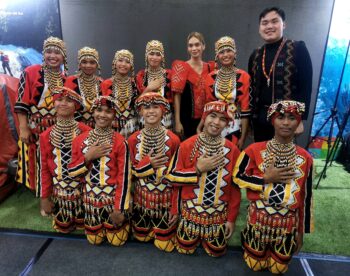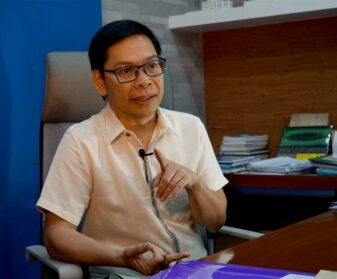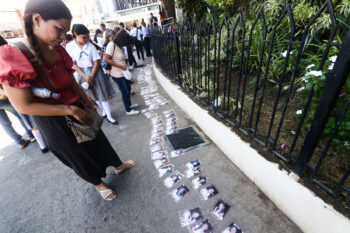I. Stuck in the Roadmap
GENERAL SANTOS CITY, August 7, 2013 – Behind the dramatics, enigmas and lit up optimism and resolve, the entrenchment of the Bangsamoro to solve the century old Bangsamoro Problem is at a very crucial stage. Almost ten months from the signing of the Framework Agreement on Bangsamoro (FAB), the Government and MILF are stuck in the roadmap over the sticky Annexes. The drafting of the Bangsamoro Basic Law, the foundation of the entrenchment, is already eight months behind schedule.
Government Panel Chair Miriam Coronel-Ferrer and Secretary Teresita Quintos-Deles, the presidential adviser on the peace process, are very optimistic the Annexes will soon be settled and the Comprehensive Agreement will be signed. Recently, in his State of the Nation Address, President Benigno Simeon C. Aquino III boosted optimism with his reassuring account of the progress toward the establishment of Bangsamoro.
MILF Chair Murad Ebrahim said at a recent conference of civil society organizations that the MILF Central Committee will help fast-track the negotiation of the remaining two Annexes like what the Committee did in resolving the contentious issues during the two-day extension of the 38th Exploratory Talks in the second week of July. This, too, is most reassuring. (MindaNews, July 26, 2013)
But Ferrer has told reporters that the remaining two annexes are as tough as or tougher than the recently signed Revenue Generating and Wealth-Sharing Annex; her “fair” forecast is they will be signed “within the year”. MILF chief negotiator Mohagner Iqbal sees difficult roadblocks ahead. However, Ferrer and Iqbal have expressed their resolve to finish negotiations on the annex soon – an admission without admitting that a few more months delay is inevitable. How few is “few” is anybody’s guess; so is how soon is “soon”.
Time Lost
Before formal talks could resume under the Aquino Government, much time had been lost due to some complications. Confidence building and miscalculations apparently took more time than expected. Let’s look at this chain of events to understand these:
The Aquino government used up its first six months, July to December 2010, in trying to change the talks parameters, protocol and facilitator only to settle for the same.
The negotiation stuck in the MILF proposal in the first seven months of 2011, President Aquino cast aside protocol to meet MILF Chair Murad Ebrahim in Tokyo on August 4, 2011. Over the apparent instant bridge of confidence they built, the two leaders agreed to fast-track the peace process.
In the wake of the goodwill won, the Philippine panel presented to the MILF panel the “3 for 1 Proposal” also called “Solution” and “Formula”, its counter peace draft, in the end of August exploratory talks. MILF rejected it on-the-spot.
Eight months after, in the April 2012 exploratory talks, the Parties signed the “Ten Decision Points on Principle” – an agreement on what they could agree, setting aside their differences for future negotiations.
Five months after, on October 15, 2012, they signed the FAB based on the “Ten Decision Points on Principle”.
They set two months, November and December 2012, to negotiate and sign the four contentious annexes. These were to be consolidated with the FAB into the Comprehensive Agreement as the basis for the Transition Commission to draft the Bangsamoro Basic Law starting January 2013.
To sum up: The first six months were wasted. By the end of next eight months, the MILF panel rebuffed the government panel for trying to change the talking points. That was fourteen months of precious time lost. Oddly, while it took thirteen months to hammer out an agreement from agreeable points, the Parties set only two months to reconcile their differences in the four contentious annexes.
Water under the Bridge
How the peace process now stands and where it is heading to shows the paradox of the “honestly different” type of negotiation that Dean Mario Victor “Marvic” Leonen, the first head of the government negotiating panel under Aquino and now associate justice of the Supreme Court, advocated. Honestly, it has not turned out to be really that different from the traditional type. The big “difference” looming is that the MILF might settle for the Bangsamoro “honestly different” from what they envisioned in 1997.
It now can be asked: Could the time lost have made a big difference had the peace talks been restarted in July or August or September 2010 from where the GRP-MILF negotiators stopped on June 3, 2010?
Where did the negotiation stop on June 3, 2010 from where to restart it in the following July or in any of the next months?
Unable to bridge the heaven-and-earth gap between their draft peace proposals they exchanged during their 17th Exploratory Talks in end February 2010, the GRP and MILF panels admitted on March 4 following they could not sign a comprehensive compact before the end of President Gloria Macapagal-Arroyo’s term on June 30, 2010. On June 3, they signed the “Declaration of Continuity for Peace Negotiation”, the guidelines for the resumption of the peace talks under the incoming Aquino III government.
The negotiation was virtually in a state of impasse for the negotiators under the new administration to break. As doubted, the new peace panel of the Government of the Republic of the Philippines – now sporting the initials “GPH” instead of “GRP” – did not pick up the talks from there. Arroyo, except by engaging Malaysia as the third-party facilitator, maintained the continuity from President Fidel V. Ramos in 1997. Aquino vowed to be honestly different, especially from Arroyo.
Are the GPH peace negotiators honestly different from their GRP predecessors?
They promised not to commit the same mistakes of Arroyo. They were referring to the unconstitutionality of the Memorandum of Agreement on Ancestral Domain (MOA-AD) and Arroyo’s lack of public consultations that led the Supreme Court to stop the signing of the MOA-AD; consequently, three MILF area commanders attacked outright military detachments and Christian villages in the Lanao and Cotabato provinces. The yearlong punitive military operations punished the Moro civilians not the MILF fighters.
They promised to write “finis” to the Bangsamoro Problem within the term of President Aquino III – never to pass it to the next President.
As the saying goes, “The test of the pudding is in the eating.” The “eating” is in the form of a sequence of episodes.
Episode 1: GPH and MILF formally resumed talks in February 2011. MILF submitted to GPH its peace draft proposal: “MILF Draft Agreement 2011: Government of the Republic of the Philippines and Moro Islamic Liberation Front Comprehensive Compact on Governance”. This was a revision of “MILF Draft Agreement 2010” the MILF handed to GRP on February 27, 2010 — a “reframe” of the MOA-AD as GRP and MILF had agreed following the Supreme Court’s suggestion in its October 14, 2008 Decision.
GPH begged off from submitting its draft proposal. It wanted to study first the MILF draft and sought clarifications in successive meetings with the MILF panel. It was six months after during their 22nd Exploratory Talks, August 22-24, 2011 that GPH submitted its draft proposal, The GPH “3 for 1” Proposal.
At this time Leonen expounded his “honestly different proposal” and “honestly different” type of negotiation which he later simplified as “Let’s first agree on what we can agree; let’s discuss our differences later.”
Episode 2: The “‘3 for 1’ Proposal”, rejected by MILF as a “Formula”, was never a “Solution”. Five exploratory talks later, in the 27th, the Parties signed the “GPH-MILF Decision Points on Principle” on April 24, 2012. This contained ten key points which were obviously consensuses from the “new proposals” of MILF – a further revision of its “Draft 2011” — to “move forward” the talks stalled by the “3 for 1” controversy.
Episode 3: After another five exploratory talks later, in the 32nd – October 2 to 5 – the Parties sealed the “Framework Agreement on Bangsamoro” which was signed in a grand ceremony in Malacanang on October 15, 2012. Elaborating the “Decision Points”, complete with an implementation roadmap, the FAB charts the entrenchment of Bangsamoro, the autonomous political entity that will replace the Autonomous Region in Muslim Mindanao.
Episode 4: The FAB, however, is just one of the two main parts of the Comprehensive Agreement (CA) as the basis in drafting the Bangsamoro Basic Law, the organic act or charter of Bangsamoro. The other main part is the four annexes that will fill out the framework (FAB) to complete the CA. The Bangsamoro peace process is stuck in this episode now.
The “GPH-MILF ‘3 for 1’ Proposal” was a very critical point in MILF’s quest for a political settlement to solve the Bangsamoro problem – a turning point in a historical drama. It rejected the MILF’s view of the problem: It is primarily a political problem needing a political solution. The government wanted MILF to accept its view: The problem is primarily socio-economic needing massive social and economic development.
MILF’s “We reject” prevailed over GPH’s “We reject the rejection” but Leonen’s “honestly different” approach held fast. The “Decision Points” and the FAB are agreements on what the Parties were in agreement after setting aside for future talks their contentious differences – opposite what MILF would have liked to happen.
In gist, MindaNews (September 8, 2011: MILF Chair to GPH: “let us be partners, not adversaries in solving contentious issues”) stated the MILF Chair’s position: “The peace process can be fast-tracked if the two parties will not tackle anymore those that had been previously agreed upon and instead concentrate on those issues where there are no agreements yet. He estimates the latter comprises only about ’30 to 40%’.”
Luwaran (August 24, 2011: MILF Central Committee urged to reject GPH draft) stated the same position, “… the immediate task of the parties is to build on what they have agreed already” which, unfortunately, Leonen misquoted attributing it to Iqbal, “Let’s work at what we can agree upon” (MindaNews, August 24, 2011: “Heaven and Earth,” says MILF on GPH proposal; “Not too far apart,” says GPH).
This is water under the bridge. Now it could only be asked: Could the peace process have turned out differently had the MILF position prevailed instead of Leonen’s “honestly different” approach? Could the peace process not have stuck in the FAB roadmap? Yet, the water “past” needs to be analyzed to see what the water still “approaching” will bring. (To Be Continued)
(“Comment” is Mr. Patricio P. Diaz’ column for MindaViews, the opinion section of MindaNews. The Titus Brandsma Media Awards honored Mr. Diaz with a “Lifetime Achievement Award” for his “commitment to education and public information to Mindanawons as Journalist, Educator and Peace Advocate.” You can reach him at patpdiazgsc@yahoo.com.)







